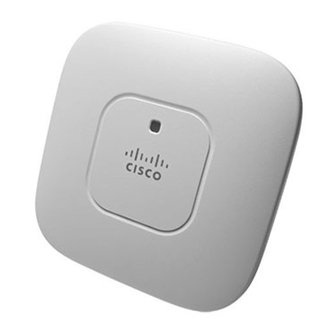
Cisco 700 Series User Manual
Using profiles
Hide thumbs
Also See for 700 Series:
- Installation and upgrade manual (134 pages) ,
- Configuration manual (87 pages) ,
- Administration manual (36 pages)
Table of Contents
Advertisement
Quick Links
Using Profiles with Cisco 700
Series Routers
A profile is a set of configuration parameters associated with ports on the router or WAN
devices.
This chapter contains the following sections:
•
Profile Overview
•
System and Profile Parameters
•
Creating and Modifying Profiles
•
Incoming Calls
•
Outgoing Calls
Profile Overview
There are two modes in which you can set parameters, the system mode and the profile
mode. System mode parameters affect the configuration on a global level. Profiles are sets
of local parameters. Profile mode parameters affect how the router handles the connection
to a device.
You do not have to reconfigure the router every time you connect to a different device.
Instead of using one set of configuration parameters for all devices, you can use different
profiles to communicate with a variety of devices.
For example, you can create a user-defined profile called 2500 that contains the parameters
to be used when communicating with a Cisco 2500 series router over the WAN. You can
customize your Cisco 700 series router to maintain up to 17 user-defined profiles. Profiles
are saved in the Cisco 700 series router nonvolatile RAM (NVRAM).
C H A P T E R
Using Profiles with Cisco 700 Series Routers 2-1
2
Advertisement
Table of Contents

Summary of Contents for Cisco 700 Series
- Page 1 For example, you can create a user-defined profile called 2500 that contains the parameters to be used when communicating with a Cisco 2500 series router over the WAN. You can customize your Cisco 700 series router to maintain up to 17 user-defined profiles. Profiles are saved in the Cisco 700 series router nonvolatile RAM (NVRAM).
-
Page 2: Profiles And Connections
Standard. The Internal profile stores parameters used to communicate between the LAN and WAN ports on the Cisco 700 series router. The LAN profile stores parameters that configure the LAN port on the router. The Standard profile is the default profile. If authentication is not required and the destination device you are connecting to does not have a user-defined profile, the router uses the Standard profile. -
Page 3: System Mode Parameter Set
When you use the set user command to create a user-defined profile, the default parameters for the new profile are taken from system mode. Using Profiles with Cisco 700 Series Routers 2-3... -
Page 4: Permanent Profiles
Loopback Permanent Profiles Cisco 700 series routers contain three permanent profiles. Permanent profiles can be modified, but they cannot be deleted. The permanent profiles are as follows: Determines how data is passed from the router to the LAN. This profile is commonly used for connections made directly to the local network. -
Page 5: Creating And Modifying Profiles
Removing Profile-Based Values You can remove any parameter value within a profile with the unset command. The parameter you removed inherits its value from the system mode. Using Profiles with Cisco 700 Series Routers 2-5... -
Page 6: Deleting Profiles
Incoming Calls In the following example, the profile parameter number is removed from the profile by using the unset command: Host:Profile> unset number Deleting Profiles The reset user command deletes a user-defined profile from the router. The three permanent profiles (LAN, Internal, and Standard) cannot be deleted. This command also closes any connection associated with the profile. -
Page 7: Outgoing Calls
Outgoing calls require that the associated user-defined profiles be set to active, that the set auto command be on, and that a phone number to call be stored in the profile. If the profile is inactive, a number to dial is not available to the router. Using Profiles with Cisco 700 Series Routers 2-7... - Page 8 Outgoing Calls Cisco700 Series Router Configuration Guide...











